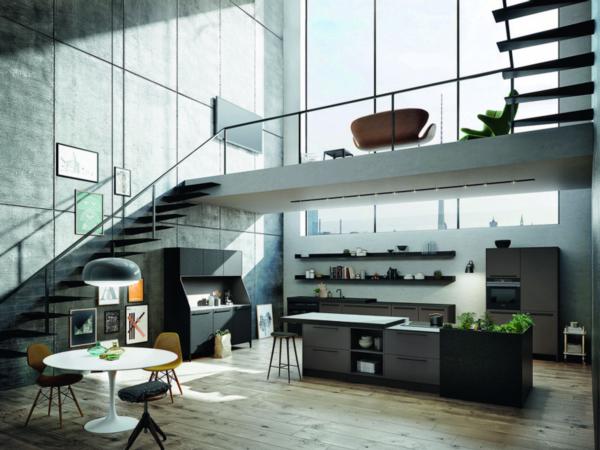Living psychology: I feel really comfortable here!
Which room, which colours, which furnishings are good for me? Anyone who knows the answers to these living psychology questions leads a happier and healthier life.
How do you like an open kitchen? Do you like it when the TV is on in the adjacent living room and the children are playing with a jigsaw puzzle at the table? Or would that make it hard for you to concentrate on your cooking? Or vice versa: Do you enjoy sitting in front of the TV or reading a book while someone’s cooking up a storm in the open kitchen? Or would you feel distracted and annoyed?
The open living level – in which the cooking, dining and living areas all flow into one – is a case study for living psychologists. That’s because it’s clear to see here how the needs of the residents for communication and contact, but also for relaxation and concentration are reflected. For those who really flourish in the bustle of family life, there could be nothing better than this form of architecture, which is becoming increasingly popular. But what about those who are agitated by all this commotion? Someone like this would perhaps like a living-kitchen area, but preferably one with a retreat niche; a work or guest room with a comfortable armchair.
Rooms have power over us. But we tend to underestimate disregard this effect. Admittedly, we feel more comfortable in some homes than in others – but isn’t that just a matter of taste? No it’s not. Our bodies respond in a fraction of a second to every room we enter: our blood pressure, pulse, skin resistance, brain currents and respiration rate change. And it’s a very individual reaction, which we’re unable to control.
And it gets stronger the longer we stay in a room, which is why it’s all the more important that all our living needs are met at home. These are:
Protection: We need to feel safe. That’s also why many floor-to-ceiling windows facing the street are covered with pleated blinds – many people feel prying glances from outside intrusive.
Communication: We need space to talk, be happy and argue with family and friends – undisturbed, of course.
Privacy: Everyone needs a personal retreat, no matter how large or small. That’s why the experts, such as the architectural psychologist Peter Richter, recommend a separate room for each family member – and not only for children, for whom this is a key factor in their personality development.
Comfort: We want things to be pleasing on the eye and convenient, with a large table in the kitchen, comfortable sofas, walk-in closets or programmable blinds – whatever’s important and helpful to us.
Representation: Whether it’s a wooden hut or a glass palace, a roof of steel or glass – a house or apartment is one of the most important ways in which we express our personality.
Architectural psychologist Riklef Rambow explains why: „The relationship between our furnishings and our self-awareness is very strong. Much the same as with our clothes. Our own space can be regarded as an extension of our identity. The more you know yourself, the greater care you take in finding things that suit you.“
Relaxing rooms do us good and have a positive effect on our health. This is also backed by evidence from studies. Conversely, uncomfortable, chaotic, impractically laid-out or incorrectly furnished rooms have a negative impact on our state of health. They can trigger permanent stress and eventually make us ill in some way.
It’s therefore definitely worth paying close attention to your own needs and those of the other family members when planning, furnishing and designing rooms. And that also includes choosing the right colours, because they have a particularly strong effect on our well-being. For example, in a room painted bright red, the resting heart rate is 10 beats higher than in a room painted light green. We can very effectively control moods by means of colours, to either stimulate or to promote relaxation. Which ones are good for you? Try them out!
